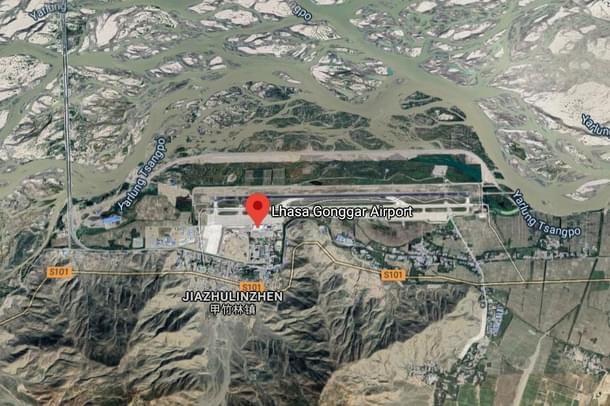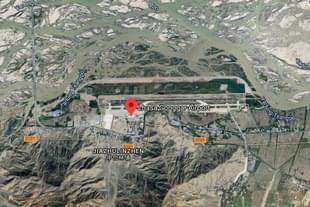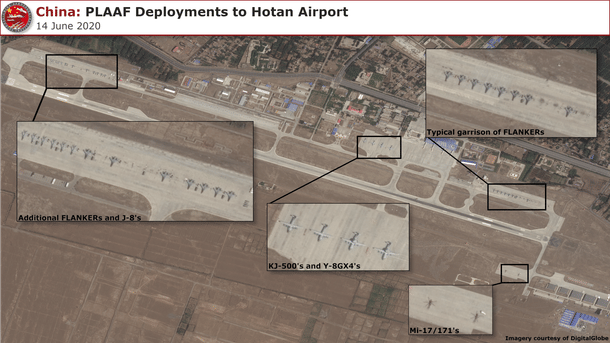News Brief
Amid Tensions, China Upgrades Its Airbase Near Doklam To Deploy More Fighter Jets In Tibet; Builds Hardened Shelters
Swarajya Staff
Sep 16, 2020, 06:04 PM | Updated 06:12 PM IST
Save & read from anywhere!
Bookmark stories for easy access on any device or the Swarajya app.


Even as tensions continue to rise in eastern Ladakh, China has significantly upgraded infrastructure at Lhasa Gonggar Airport, a base of the People’s Liberation Army Air Force (PLAAF) located close to Bhutan’s Doklam region.
At this strategically located airbase, satellite images show the Chinese have upgraded the apron and built new hardened aircraft shelters.
While an upgraded apron will allow the airbase to accommodate more fighter jets than before, the new hardened aircraft shelters, which have come up at the PLAAF base, will protect its fighters from enemy missiles and bombs.

This base, which saw deployments during the Doklam crisis in 2017, is located at an elevation of nearly 3,500 metres and has a 4,000 metres long runway.
Indian and Chinese troops were locked in a military standoff in Doklam in 2017, when the latter tried to build a road in the area. Indian troops walked in to stop the Chinese construction activity as the area lies in Bhutanese territory.
For decades, the PLAAF has been at a disadvantage vis-a-vis the Indian Air Force as its airbases lack modern infrastructure. This is quickly changing now.
The Chinese are also upgrading infrastructure at its Ngari Gunsa Airbase. At the base, located just 200 kilometres away from Pangong Lake, new construction activity has been seen over the past few months.

Satellite images dated 15 May, posted by an open source intelligence handle on Twitter, show construction in a large area parallel to the runway since April 2020. According to reports, it could be a “second taxi-track or a secondary tarmac”.
At least four PLAAF fighter jets, possibly J-11s or J-16s (domestically produced variants of the Russian Sukhoi 27), can be seen at the base.

This deployment at Ngari Gunsa was first seen in December 2019.
Reports say Chinese "fighter aircraft have been carrying out sorties from air bases in Hotan and Gargunsa and fly 30-35 kms from our territory in Ladakh".
China’s increased fighter deployments in the region are visible at the Hotan Air Station, one of PLAAF’s major bases lying north of Ladakh in Xinjiang.
The PLAAF, according to Air University's China Aerospace Studies Institute (CASI), deploys around 12 unidentified variants of Flanker (Su-27) at its base in Hotan. An assessment published by CASI in June, based on satellite images dated 14 June, says China has deployed “an additional 24 aircraft” at this airbase.

“The PLAAF also has the ability to control air operations in theater. Hotan is host of the PLAAF’s Hotan Command Post. PLAAF command posts are division-level command elements that can provide command and control over air operations within a designated air space,” the CASI report reads.




